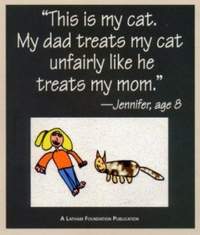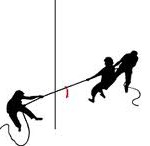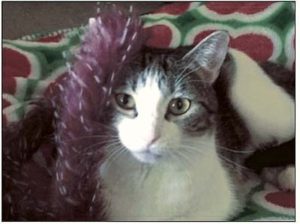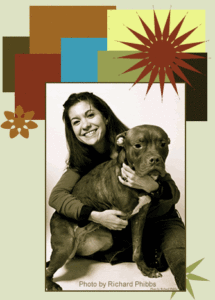 The New York Times recently (May 7) ran a piece by Jessica Pierce asking the provocative question “Is your pet lonely and bored?” Today there are as many pets in the United States as there are people; and in most homes pets are family — and not just dogs and cats, but rabbits, rats, bearded dragons and snakes.
The New York Times recently (May 7) ran a piece by Jessica Pierce asking the provocative question “Is your pet lonely and bored?” Today there are as many pets in the United States as there are people; and in most homes pets are family — and not just dogs and cats, but rabbits, rats, bearded dragons and snakes.
According to many veterinarians and psychologists this phenomenon is evidence of a deepening “human-animal bond.” Scientists studying animal cognition and emotion are continually peeling back the mysteries of animal minds, revealing an incredible and often surprising richness in the thoughts and feelings of other creatures.
In light of this growing understanding, Pierce confesses feelings of guilt for having had subjected her goldfish to a life of endless tedium, swimming circles in a small bowl – knowing now that goldfish feel pain and engage in socially complex behaviors.
Her feelings of guilt were amplified when University of Tennessee ethologist Gordon Burghardt’s proclaimed “the best we can do for captive reptiles is a life of ‘controlled deprivation.’” Pierce owned a leopard gecko named Lizzy who died after what she now recognizes as two torturous years despite her best efforts to provide proper care. Pierce’s personal awakening caused her to ask how many other “well-meaning pet owners unwittingly cause harm by keeping animals in captive environments that might not meet their behavioral needs”?
In addition to the ethical issues affecting the many small creatures we stuff into cages and tanks, she also asked challenging moral questions regarding our best friends: dogs and cats. Dogs and cats have lived in close contact with humans for thousands of years and are well adapted to living as our companions. They can form close bonds and communicate their needs and preferences to us, and we to them.
Yet their well-being may be more compromised than we’d like to admit. There are, of course, the obvious problems of cruelty, neglect, abandonment, the millions wasting away in shelters waiting for a “forever home” that will never materialize or those lives snuffed out because they don’t or can’t behave the way a “good” pet should. Pierce suggests that even the most well-meaning owner doesn’t always provide what an animal needs, and wonders if our dogs and cats suffer in ways we don’t readily comprehend as a result.
How many dogs, for instance, get lots of attention inside a home, but rarely go outside? How many spend weekdays inside alone, while their owners are at work, save for the one or two times a dog walker or neighbor drops by for a few minutes to feed and take them out briefly? Is it possible our animals are suffering from loneliness or boredom?
In addition to love, dogs and cats need our time, space, energy, patience, money and a strong sense of commitment. If we buy fewer dogs and cats from breeders and pet stores, the pet population boom might gradually taper off, and the numbers of abandoned animals dying in shelters should start to decline as well.
It can be difficult to recognize, much less admit, the harmful aspects of pet ownership when all we hear is how beloved and happy pets are in our company, and how beautiful and enduring the human-animal bond is – all of which is often true!
But if we really care about our animals, great and small, we will look beyond these sentimentalities and carefully scrutinize our actual practices. Animals are not toys; they are living, sentient creatures. Pierce suggests that if we view the world through their eyes we’d better understand the quality of life we provide or deprive them.
Source: Is your pet suffering?
 Over the years I have come to understand compassion as a deep awareness of the suffering experienced by another – coupled with the desire to relieve it. Compassion is more vigorous than sympathy or empathy, compassion gives rise to an active desire to alleviate another’s suffering – making compassion the essential component in what manifests in our social context as altruism.
Over the years I have come to understand compassion as a deep awareness of the suffering experienced by another – coupled with the desire to relieve it. Compassion is more vigorous than sympathy or empathy, compassion gives rise to an active desire to alleviate another’s suffering – making compassion the essential component in what manifests in our social context as altruism.


 These are challenging times for government officials. In many communities the care of lost and homeless animals can be complicated by a host of competing priorities. When evaluating conflicting priorities it’s easy to look to the bottom line. When that happens, questions of compassion can be overlooked.
These are challenging times for government officials. In many communities the care of lost and homeless animals can be complicated by a host of competing priorities. When evaluating conflicting priorities it’s easy to look to the bottom line. When that happens, questions of compassion can be overlooked. The New York Times recently (May 7) ran a piece by Jessica Pierce asking the provocative question “
The New York Times recently (May 7) ran a piece by Jessica Pierce asking the provocative question “

